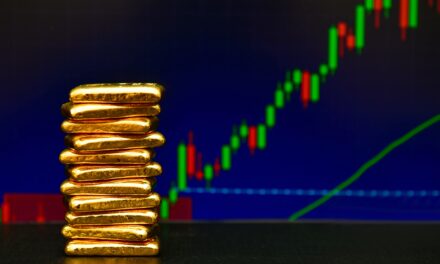Editor’s Note: After recent pullbacks, you’re likely on the hunt for stocks to buy.
Adam O’Dell walked you through the Value factor of his Green Zone Power Ratings system on Tuesday. This factor helps you determine if you’re paying a good price for a great stock. And Matt has some follow-up guidance on how to identify dreaded “value traps.” We’ve updated this April 2023 piece because it may be even more relevant now…
I get this question a lot: How can I find a solid stock to buy that’s also a good value?
Investors want to know what they should buy (or avoid) as this bull market carries on.
When the market is skyrocketing, stocks can become too expensive based on certain metrics. Just look at the valuations for some of the most popular Big Tech stocks.
When the market turns south, those companies start trading at more attractive prices.
But you have to look deeper than just the price of a stock when making an investment.
Today, I want to talk about value and show how our Green Zone Power Ratings system can help you avoid falling into “value traps.”
The Problem With Value Stocks
The rationale for value investing is pretty simple: You buy a stock for less than its intrinsic value, then sell it later for a profit.
But there are a few problems with that:
- There isn’t a universal definition of “value.”
- Some stocks are cheap for a reason.
Oftentimes, when you seek out good value investments, you narrow your screening using one factor, such as the price-to-earnings (P/E) ratio.
This is a mistake because it can present you with what we call the “value trap.”
Value traps are stocks that appear cheap using standard value metrics like price-to ratios, but they don’t turn a profit (or even fall) because of underlying business fundamentals.
These are the stocks that are cheap for a reason, as I mentioned above.
Our Green Zone Power Ratings system can help you avoid those value traps and make smart value investing decisions.
Get Around the Value Traps
Value is one of the six factors that make up our proprietary system. The other five are Momentum, Size, Volatility, Growth and Quality.
These are six of the most widely used factors in the investing world.
Within the value factor are several subfactors such as (P/E), price-to-sales and price-to-cash flow.
All of that data gives us a value factor rating on a scale of 1 to 100. The lower the stock’s valuation, the higher it rates on Value.
As I said above, focusing on just one metric when screening for investments is not the best approach.
Remember, just because a stock looks like a good value based on price-to ratios, doesn’t mean it is.
You have to dig deeper.
It’s why the multifactor approach of the Green Zone Power Ratings system is so powerful.
For example, if I found a stock with a 99 rating on our Value factor, but a 45 on Quality, I would have concerns that I was looking at a potential value trap.
A low score on Quality raises red flags about the company’s finances. It tells me the company is struggling.
Hence, that company would be a value trap — meaning it appears cheap because it is, and its future prospects don’t look great.
There isn’t a method for avoiding these value traps with 100% accuracy. But we can cut out a huge number of potential traps by combining our Value factor with other fundamental factors of our system.
If you want to run potential stocks through our system, click here to see how you can gain access now. After joining Adam’s flagship service, Green Zone Fortunes, you can find out how thousands of stocks rate in seconds.
Maybe you’ll find out that stock you’re eyeing is cheap for a reason…
Safe trading,

Matt Clark, CMSA®
Chief Research Analyst, Money & Markets





